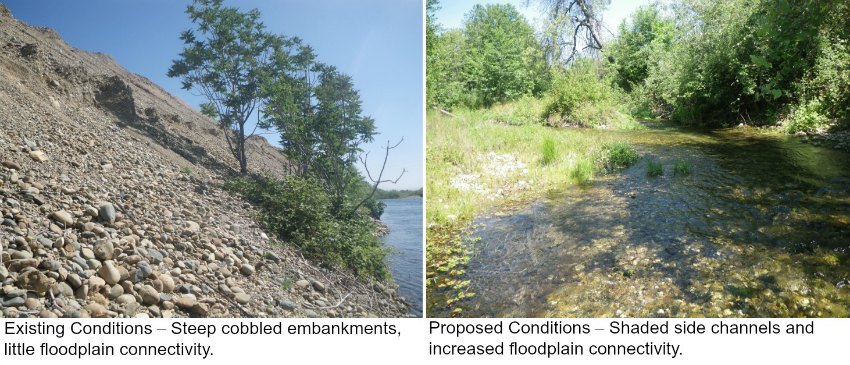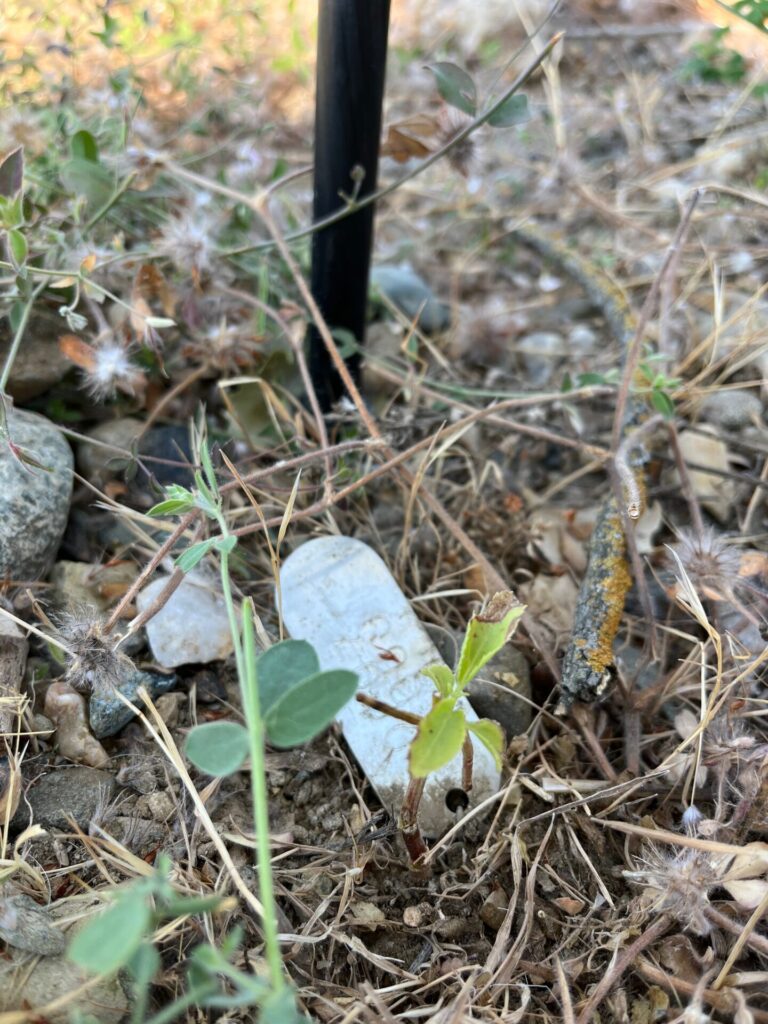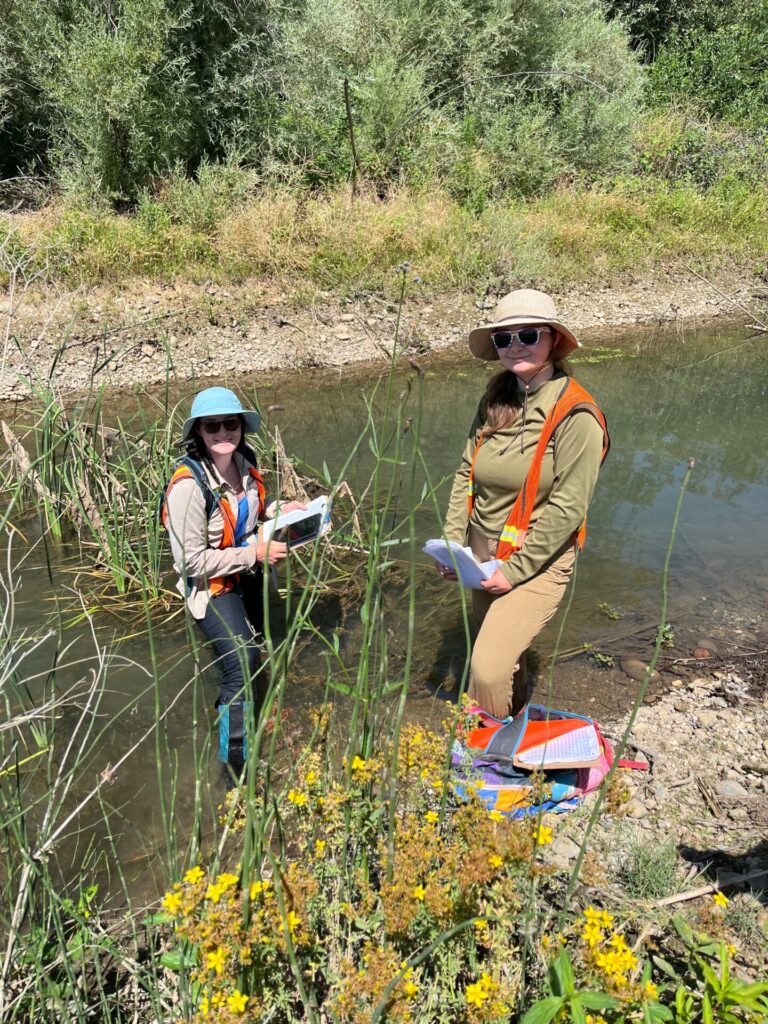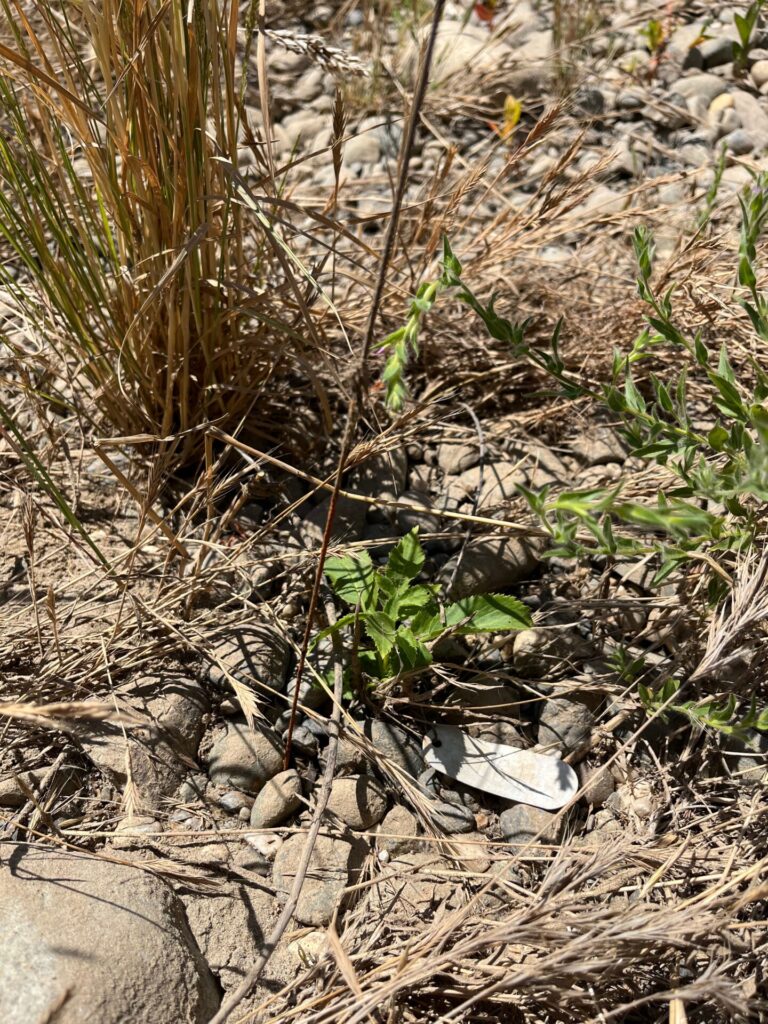Hallwood Side Channel and Floodplain Restoration Project

The Hallwood Side Channel and Floodplain Restoration Project, funded by the U.S. Fish and Wildlife Service, will improve habitat in the Lower Yuba River for Chinook salmon and steelhead trout. Other project partners include Yuba Water Agency, cbec eco-engineering, Cramer Fish Sciences, South Yuba River Citizens League (SYRCL), Teichert Materials, and Western Aggregates.
Background: In the project area, the Yuba River is constrained by tall linear cobble embankments called training walls, which were constructed in the early 1900s by hydraulic dredges following the Gold Rush. These training walls are within the highly modified Yuba Goldfields setting where hundreds of millions of cubic yards of hydraulic mining sediment was deposited in the lower Yuba River through the early 1900s. The area was subsequently dredged multiple times, creating significant impacts for the natural flow of the river and the floodplain. A large training wall in the middle of the river, known as the Middle Training Wall, runs more than 2 miles along the length of the project
The project design is based on the premise that restoration of natural river and floodplain processes, including the removal of large portions of the Middle Training Wall, will create a healthier, more natural, and therefore, more productive river. Improvements will enhance up to 157 acres of seasonally inundated riparian floodplain, approximately 1.7 miles of perennial side channels, and approximately 6.1 miles of seasonally inundated side channels, alcoves, and swales. Enhancements will be made through land surface changes, riparian planting, and placement of large woody material embedded to simulate a more natural river at key locations. The total project cost is estimated to be $6 million. Funding has been provided by USFWS grants and Yuba Water Agency.
Construction is currently in Phase 4.
Phase 4 of construction began in June 2023. This is the last phase of construction on the Hallwood Side Channel and Floodplain Restoration Project. During this phase, we will remove the final portion of the middle training wall, complete final grading of Phase 3 and 4 floodplains and tertiary channels, plant additional trees, and place large woody material to increase juvenile salmon habitat complexity. Construction is expected to be completed by late November 2023.
A temporary bridge has been installed across the north channel of the Yuba River at the Teichert-Hallwood plant for access to the work area. Any watercraft should reduce speed when traveling through the north channel and flows can change without warning. This will be in place from June 30 – November 30, 2023. For more information call Yuba Water Agency (530) 741-5000 or Yuba County Sheriff Marine Patrol (530) 749-7777.
In 2022, approximately 760,000 cubic yards of material was removed from the middle training wall in the Phase 3 footprint to achieve an interim grade which will be finished in 2023. A total of 32 large woody material structures were also installed within the Phase 1 footprint (middle training wall, point bar, and the upper end of the perennial channel).
Juvenile Chinook salmon and O. mykiss were documented rearing in the perennial side channel and alcoves during spring 2021 and 2022 (low flow drought years) and in inundated floodplains and alcoves in 2023 (a high flow wet year) during snorkel and seining surveys. During 2023, extended salmonid rearing was documented into at least mid-June in the Hallwood site, whereas juvenile salmonids were absent by mid-May at an unrestored control site. A juvenile Chinook salmon PIT tag mark-recapture study documented habitat use and growth of individual fish in the Hallwood floodplain and alcoves.
Preliminary data from 2021 suggest that drift invertebrate prey densities increased in the Hallwood side channel after restoration, and juvenile salmonid stomach fullness increased and percentage of empty stomachs decreased following restoration. Non-native fish communities that prey upon and compete with juvenile salmonids were almost completely eliminated following restoration. Natural riparian tree recruitment was documented across all habitat types (floodplain, side channel margins, alcove), including cottonwood, several willow species, alder, Oregon ash, sycamore, button willow, and coyote bush.
Phase 3
- Portions of the Middle Training Wall continue to be removed bit by bit
- Enhancing floodplain and seasonally inundated side channel habitat is the focus of this phase
- As a part of this phase, Large Woody Material (trees with branches, some with root wads still intact) will be strategically placed in the floodplain area. These features function as juvenile salmonid habitat by creating slower moving water conditions where juveniles can congregate as they feed and grow
- Biological monitoring efforts continue in off-channel habitat to measure ecosystem benefits from Phases 1 and 2.
- New beaver activity continues to be observed
- This creates new habitat for fish and fosters moist conditions for naturally recruited and planted vegetation in summer months

Underwater videos from a recent snorkel survey at Hallwood on June, 2023
All video shot by Philip Colombano
In early August of 2023, SYRCL conducted annual survivorship monitoring at Hallwood to assess how planted native riparian species did over the last year. Despite a hot dry summer followed by high flows and extended period of inundation, a few planted elderberries made it through.
Overall, survivorship of container plants (nursery origin plants that are NOT willows or cottonwood) was very low, but willow and cottonwood cuttings showed higher success. So, those little elderberry plants that made it through are total troopers! Planting will continue in the fourth and final phase of the project in the fall of 2023.




